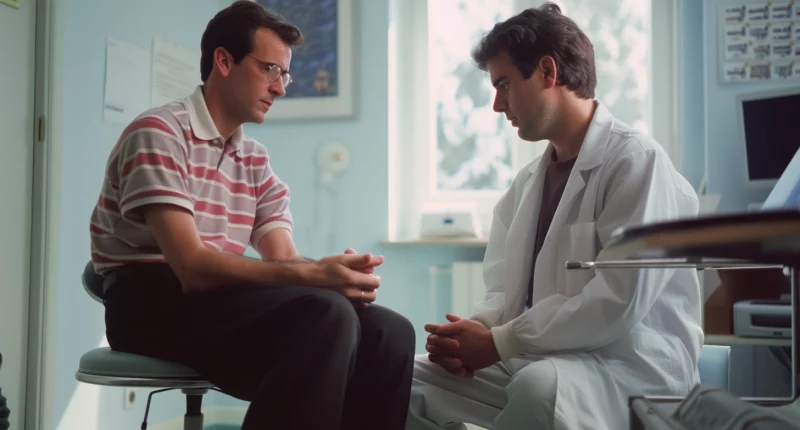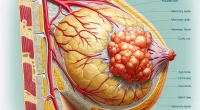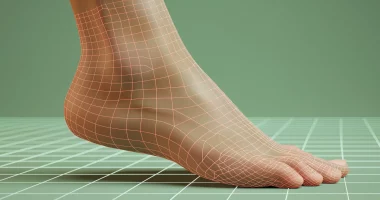Benign prostatic hyperplasia
What is benign prostatic hyperplasia?
Benign prostatic hyperplasia (BPH) is a prostate tumor caused by hyperplastic changes in the paraurethral glands (located in the prostate part of the urethra). The pathology occurs in one in four men over the age of 40 and one in two over 50. The disease is not oncologic, but the term “benign” does not exclude the possibility of degeneration of the tumor into cancer.
Disease
With hyperplasia, internal cells of the prostate gradually increase and expand, compressing the urethral canal. Because of this, the process of urination is disrupted. Over time, the congestion in the bladder becomes permanent, leading to acute or chronic urinary retention, and also increases the risk of cystitis, urethritis, pyelonephritis, and kidney failure.
Types and stages of hyperplasia development
Hyperplasia goes through three successive stages of development.
- Compensated. Overgrowth of the bladder muscles compensates for narrowing the urethral canal. The dynamics of urination change, but there are no serious violations.
- Subcompensated. Because of dystrophic changes in the bladder walls, the amount of residual urine increases, and there are violations in the functioning of the kidneys.
- Decompensated. The bladder is stretched, full of urine, but complete emptying is impossible. Chronic renal failure is progressive.
Depending on the location of the tumor, there are three different types of hyperplasia:
- 1. Transitional Zone (TZ) Hyperplasia
- The transitional zone surrounds the urethra and is the most common site affected by BPH. Hyperplasia in this area can cause significant compression of the urethra since even small increases in size can lead to urinary obstruction.
- 2. Central Zone (CZ) Hyperplasia
- Hyperplasia in the central zone is less common and typically does not affect the urethra
- directly. However, significant enlargement can exert pressure on the surrounding tissues.
- 3. Peripheral Zone (PZ) Hyperplasia
- The peripheral zone is the outermost part of the prostate and is least commonly affected by BPH. Enlargement in this zone is more likely to be noticed during a digital rectal exam (DRE).
There is also a multi-focal form of pathology, where multiple nodes develop within the gland simultaneously. Similarly,tumor growth may occur in several directions at once.
Symptoms and symptoms of prostatic hyperplasia in men
In the early stages of disease development, mild urination disorders are observed:
- daytime calls become more frequent.
- man goes to the toilet 1-2 times a night;
- before morning urination, you need to strain your abs;
- the urine stream is slow (almost vertical).
- it is necessary (sudden) to urge the release of a small amount of urine.
Stage 2, 50 ml or more of urine is continuously retained in the bladder. The patient suffers frequent urges as the amount of urine released decreases sharply; at night, urination becomes more frequent. Throughout the process, the man is straining the abdominal muscles. The discharge of urine becomes intermittent or wavy. Sometimes, there is a drip leakage between acts of urination. Stagnation of the bladder leads to infection, so cystitis, urethritis or pyelonephritis develops.
In the last stage, “paradoxical urinary retention” occurs. The patient’s urge to urinate is constantly present, but even with great effort, voiding is impossible, which is associated with severe dystrophy of the muscle fibers of the bladder. Urine flow continually decreases. Against this background, the lower parts of the urinary bladder and the upper parts begin to suffer – the renal pelvis becomes enlarged, the parenchyma of the organ is constricted, and signs of renal failure appear.
Causes of hyperplasia
After the age of 40, the level of sex hormones changes dramatically in men, leading to a breakdown in the function of the prostate gland. Researchers conclude the role of hereditary factors and transmit testicular diseases.
Risk factors that affect the development of prostatic hyperplasia include:
- hypertension (high blood pressure);
- obesity;
- lack of physical activity;
- often stress;
- bad habits: alcohol, smoking;
- an inherited tendency.
Diagnosis of hyperplasia
At signs of the disease, you should consult a urologist. To objectively assess the symptoms, the doctor will collect the patient’s complaints and suggest they fill out a urination diary.
A preliminary assessment of the prostate condition is performed by the finger method. The doctor palpates the gland through the anus. The procedure is painless and takes 1-2 minutes. Additional checks will be prescribed to assess changes in the prostate objectively.
- Ultrasound is most often performed using the transrectal method. You can get information about the number and structure of the gland and the degree of narrowing of the urethra.
- PSA test. A blood test for prostate antigen is used to distinguish between benign and malignant tumors.
- Biopsy. It is performed when the results of other studies are questionable about the definitive exclusion of the cancer from the process.
- Urodynamic studies are prescribed to evaluate the condition and function of the bladder and kidneys.
Treatment methods for hyperplasia
The choice of treatment method for hyperplastic prostatic hyperplasia depends on its cause, stage of development, and the severity of the main symptoms. In the arsenal of doctors, there are conservative and surgical methods. Each of them has its own indications, contraindications and conditions. The urologist carefully evaluates this information and selects the best medical option for the patient.
Conservative treatment
Conservative treatment is possible in the early stages of the disease. It combines medical treatment with alpha-blockers, 5-alpha reductase inhibitors, and herbal remedies (in capsules or suppositories). Conservative treatment is also carried out if the patient is an absolute contraindication to surgery.
With the development of infectious complications of the urogenital system, the appointment of antibiotics and antispasmodics has additionally been reported.
Surgical treatment: removal of hyperplasia
- Surgical treatment of benign prostatic hyperplasia is performed in men with stage 2-3 disease with appropriate symptoms, as well as a high risk of malignant degeneration of the tumor. To remove the overgrowth, the following operations may be performed:
- transurethral resection – the removal of part of the gland using endoscopic devices inserted into the urethra. This can be done in 706 hospitals all across the world (https://doctor.global/results/diseases/benign-prostatic-hyperplasia-bph/procedures/transurethral-resection-of-the-prostate-turp), for example in Germany with an average price of $9.7 K based on calculations from 35 hospitals. (https://doctor.global/results/diseases/benign-prostatic-hyperplasia-bph/procedures/transurethral-resection-of-the-prostate-turp)
- laser vaporization of the tumor is often performed in younger patients because it allows you to maintain sexual function;
- laser enucleation – a laser beam used to remove a tumor from the prostate; it is used even when large tumor size.
Prevention
To reduce your risk of developing hyperplasia, or at least delay the onset of the disease, follow these prevention guidelines:
- regularly visit a urologist;
- timely and complete treatment of genital diseases;
- to give up bad habits;
- control the weight.
- eat right;
- use vitamin complexes for men;
- lead an active lifestyle.
- have a regular sex life.
If a man does not forget to undergo regular screening to assess the health status of his prostate, does not allow the development of inflammatory and infectious urinary diseases, or treats them promptly, he is likely to face unpleasant consequences of hyperplasia. If the urologist notices signs of problems, he will prescribe a treatment that will prevent the progression of the pathology.
After rehabilitation for benign prostatic hyperplasia
Modern and mini-invasive surgery is used, so the patient can be discharged a few hours after the intervention. The duration of the recovery period depends on the chosen method of surgical treatment and the individual characteristics of the human body. For the first 2-4 weeks, you will need:
- drink at least 3 liters of fluid daily (but not after 18 hours).
- balanced diet to avoid constipation; if necessary, take laxatives;
- avoid alcohol, spicy and spicy foods.
- limiting exercise, stopping playing sports, and lifting weights.
- do not visit spas and saunas, do not take baths, do not swim in open or public pools;
- do not drive a car, ride a horse, bicycle or motorcycle.
Sexual activity is limited to a period of 1.5 months or more. If necessary, the doctor will prescribe medical treatment, rehabilitation in a sanatorium, etc. At the end of the rehabilitation period, you should follow the same rules as for disease prevention.




